Enterprise Sales, Marketing & Inside Sales Team Build Out, First International Customers Acquisition, Enterprise Pricing etc. I understand, we have heard these topics in multiple events & conferences, so why this round table be different? The difference is gyan vs hearing from real person with real experience which sometimes exactly what you want to hear, even reading 10 books will not help compared to one line coming from a CEO who has done it over and over again and seen the success.
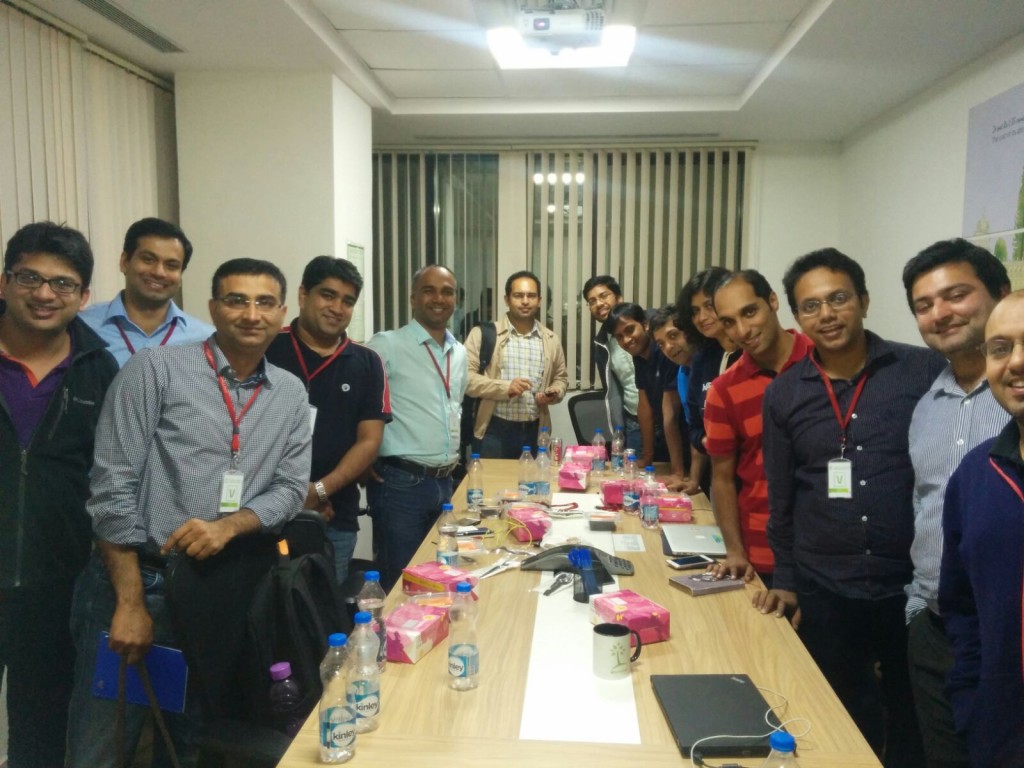 In this Round table, Aneesh was leading and moderating the discussion. He leveraged the experience of other founders which made the most out of few hrs of interaction. The participants are founders of mid-stage startups, who have good-size customers and have decent ARR (Annual Recurring Revenue), growing and scaling.
In this Round table, Aneesh was leading and moderating the discussion. He leveraged the experience of other founders which made the most out of few hrs of interaction. The participants are founders of mid-stage startups, who have good-size customers and have decent ARR (Annual Recurring Revenue), growing and scaling.
This blog narrates the learning in the form of Q&A.
How to establish a meaningful and sustaining Partnership for your B2B enterprise business and grow your business?
- Partner are those who have done similar product sales in medium/large scale before, so ask them for their sales targets (region wise) and their profile of B2B partnership in their existing set up. That is a good validation point for partnership. {It is like validating by their current and past experience in partnership}
- Partners could be the companies who are into services (in your industry vertical like healthcare or retail etc) and likes to have monthly revenues.
- If your product sit on top of other product and integrates then go for a partnership program to the base product. For instance, if your product complements or built on top of Salesforce, then you can enroll in Salesforce has AppExchange program wherein you can list your product and generate good visibility and leads. Partners, could be the product that your software compliments or built upon it.
- Partners could be the implementation companies of the product that your product built on or compliment. Say your software built on Salesforce, then the service companies who are implementing Salesforce solution could be your partners.
- You could also go for two-way partnership, like I push your product and you push mine, sometimes one partner performs a lot better than the other, in that case, be open and refine the terms as you go in the journey.
- If you are enrolling in partnership programs from large companies like IBM, Salesforce etc and see if you can use their promotion events and brand your product, many gives a free offer for promotion. You might end up in getting leads worth a lot that might seems impossible to generate by the solo marketing you do on your own. These large companies also have paid outreach which has high outreach and see if it is worth investing.
- Incubator and Accelerator, if you are part of any incubation center or accelerator that helps a lot in getting the right partnership e.g Microsoft accelerator
- How to bring transparency in partnership? You might also want to try “Lead Protection Program” which creates 100% transparency in the leads generated, let your partners enter the leads in your CRM & both of you can track the status and you can also make sure that right analytics are coming out.
- If the partners are asking for exclusivity, ask for minimum guarantee e.g 30 qualified leads per quarter per area
- Partnership takes time to achieve, so keep experimenting, be conservative and go slow, do a some sort of pilot before you sign larger partnership contract. And ready to fail as it takes time to get into right partnership.
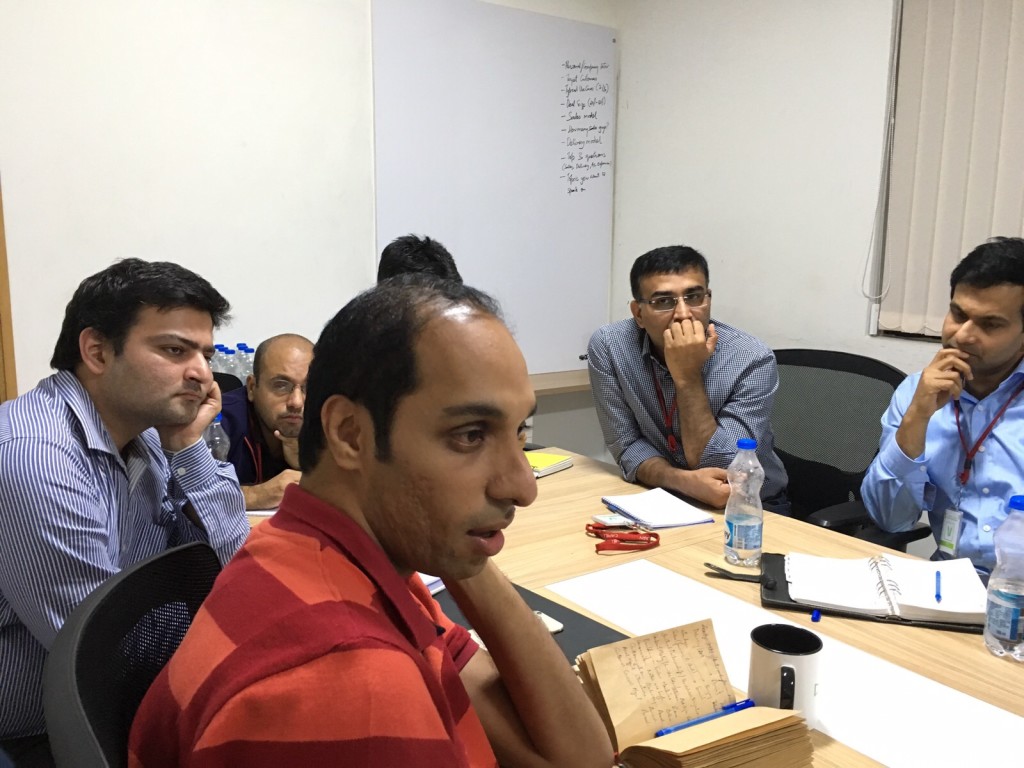 How to acquire customers in new international market?
How to acquire customers in new international market?
- You can go with the existing customers and if they have business overseas then you can approach them for the initial open door to international market.
- Another suggestion is to participate in events and have a booth or something so your product gets exposure and you might end-up in getting partners or customers
- LinkedIn is a great source to find first few pilot customers in that region.
- Overseas partnership also you can explore using LinkedIn or Quora, but it is not that easy to find viable partnership
- And also cold calling for opening doors also worked for few startups.
- If your product is like B2C then publishing in appstore, Appstore marketing, google adwords would be a good start, but if you are in B2B and enterprise sales, then the steps mentioned in the beginning are the way to go.
- Once you have handful of customers internationally, select a country where you could open a small sales team may be start with one or two guys and these guys need not be very senior like VP level, 2 yrs to 5 yrs exp and they have to work with India Sales team parallaly. You might need to travel and stay there for a while for initial years to establish a sales pattern oversees.
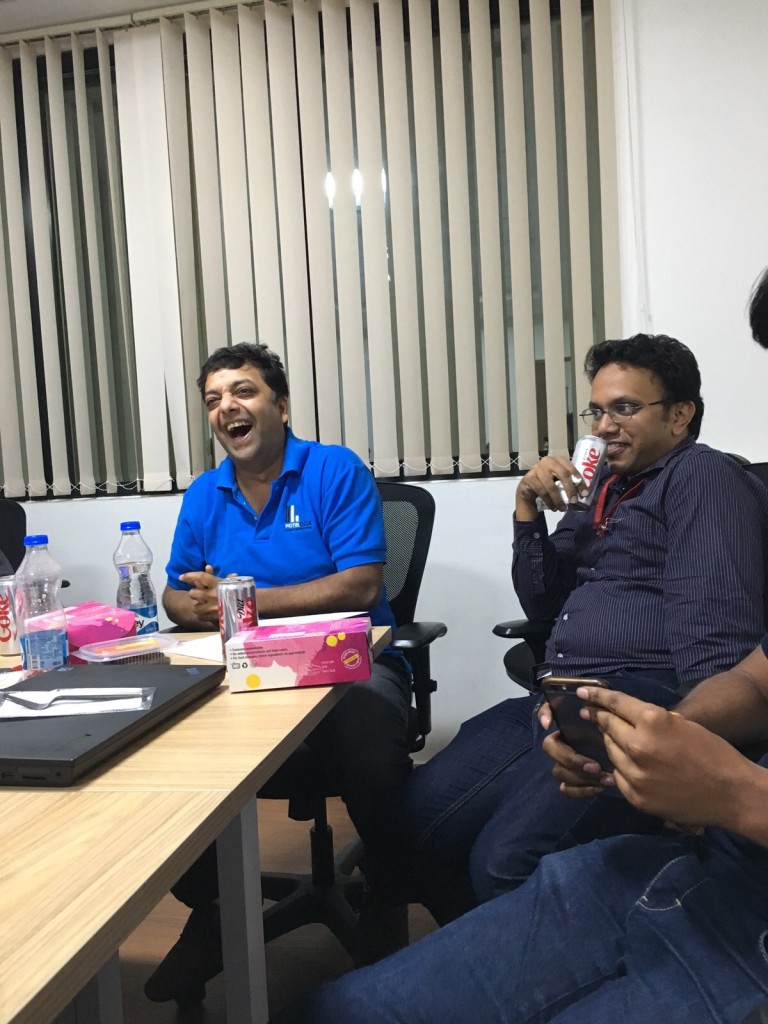 How is to do pricing for your product?
How is to do pricing for your product?
- See your competitor price and product features and how much it solves the customer problem, how your product makes them dependable, this combination will help you to arrive at pricing.
- If your product a lot better than your competitor, do not lower your price to compete, you need to stay at a price tag for the right product.
- If your product does not have India based competitor, see the US pricing and create some kind of benchmark value to arrive your pricing.
- You can have different packaging but not too many, max 3 to 4.
- You kind of have to experiment with pricing, for e.g one of the enterprise product was priced it 5k for the first few customer during pilot (initial years) and when they need to sell the product in the second year to a bigger organization, they tried quoting 1L and end up in selling at 60k. So you need to try and see how market is reacting for your new pricing, first few year keep experimenting, you will be able to arrive at pricing between 1 to 3 yrs if not before.
- When you sell enterprise product, make the price attractive in the pilot stage and after showing the desired results, you can go for high price and the customers would not mind paying it as they have seen the results which impacted their top line.
- The pricing could be geography based and can be different. And again, find the right pricing by seeing your competitor and demand in that market.
- If you want to give freemium version, give it free but let the customer give you some kind of asset that you can use for your business like marketing or brand building. For e.g refer 2 friends to get the free version or share in your facebook page to get the access. Some kind of exchange of benefits for freemium version.
What is the most painful growth in the entire journey of the startup?
- 1M to 5M growth is the most painful where you are likely to make mistakes
- While growing fast, you need to be careful when reaching to new markets, not all regions works great for your product. US need not be the best market for all products. If you have invested in one region and seems like it is not working, then shutdown and alternate your sales strategy in overseas.
- Please refer “acquiring customers in new international market” for more details.
How to upsell and cross-sell to your existing customers?
- There are two ways, first upsell more apps/ additional features to the same customer
- Second is find out other departments or other sister organization and do a cross sell
- An customer account is usually handled by an account manager, the upsell/cross sell need be done by different person say group account manager.
- Every group account manager handles multiple accounts, like 5 to 10 accounts, is responsible for upselling. The account manager finds opportunities for upsell. Do not mix up the account manager dealing with customer on day-to-day basis to do upsell as the negotiation will become very tricky otherwise.
How to give discounts to the customers in SaaS product?
- The discounts needs to be distributed, do not give them at one go.
- For instance, do a yearly subscription with 2 months off. Those two months are going to be 11th and 12th month. So incase they leave in 6 months, these discounts does not qualify.
- Another way you could spread across 3 years like 3rd month, 6th month off, 22th month off for discounts.
How much is the typical yearly renewal increase in ARR for the Enterprise Product?
- 8 to 10%
- We need to say 10% increase is very common and if the customer creeps, bring down to 8%
How to get testimonials and referrals?
- Usually testimonials are done after building a strong relationship with a customer. Usually after 1 or 2 years. Make sure that the account managers and CXO’s of the company has a good relation built with customers to ask for testimonials. Once you establish those soft links, whenever the customer delightness go very high and initiate the process. e.g Release of product feature which solves one of their pain point which the customer demanded for a while.
- Another idea is to mention this in the subscription or contract time itself. Suppose if the customer is asking for discounts then you can tell him that you can enroll in the “Loyalty Program” in which you might have to give testimonial & also give 2 referrals and participate in the case study within the first 2 years and you are eligible for this much discounts. This way the customer is well aware of the expectation and also enjoys discounts. Do not give discounts for free, make him have some benefits offered to us.
Does awards and recognizing important for startup?
- This comes directly into credibility building so it is good to get some recognition
- The important point is apply for recognition that are credible and genuine with a selection process like boot up awards by ispirit
- Have some sort of recognition award or have an article or mention in international news & media like Techcrunch, Harvard Business Review, Gartner, Marketing Magazine, Forbes, Wall Street Journal etc.This will help both India & international brand building.
- You can use a PR agency to reach out these media and appear for the competition or for the product review
Name some books good for Inside Sales and for Complete Sales?
- Predictable Revenue by Aaron Ross
- Sales Acceleration formula by Mark Roberge
Is there any online tests used as a first-cut of sales roles?
- Yes, you can use https://mettl.com/test/sales-personality-test-assessment
- Second rounds onwards read the inside sales interview in the below questions
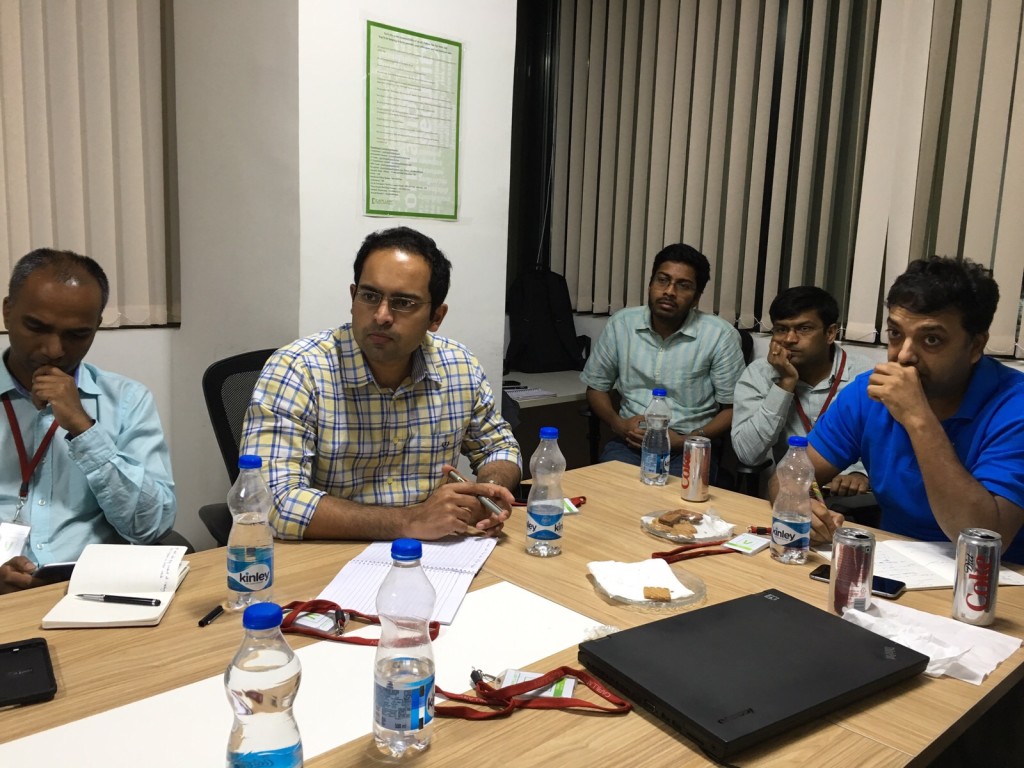 How to provide incentives for your IS(Inside sales) team?
How to provide incentives for your IS(Inside sales) team?
- Incentive are always a motivating factor for the Inside Sales team. We have laid out some numbers as a sample for you to see below.
- 2% to 3% of Annual Recurring Revenue(ARR) for new customer acquisition.
- 2% to 2.5% of annual revenue for UpSell/Cross Sell or have a fixed amount like 10k for all revenue of 3L to 5L per year, 5K for 2L to 3L etc.
- You can also say, if you get a referral from a customer then the account manager gets 5% of revenue.
- You can also include testimonial incentives for e.g Video testimonials 10k, Text testimonial 5k, Case Study like 10% of ARR
- Even you can add some incentive for first go-live means successful deployment and this is applicable for enterprise products
- Make sure these numbers are published and you make sure the check is given to him as soon as you receive them from the customer.
We would be writing another blog on a related & demanding topic “How to set up a Inside Sales Team from scratch & generates Leads?” in the upcoming week.Stay Tuned and Happy Reading!
Contributed by Asha Satapathy, DocEngage


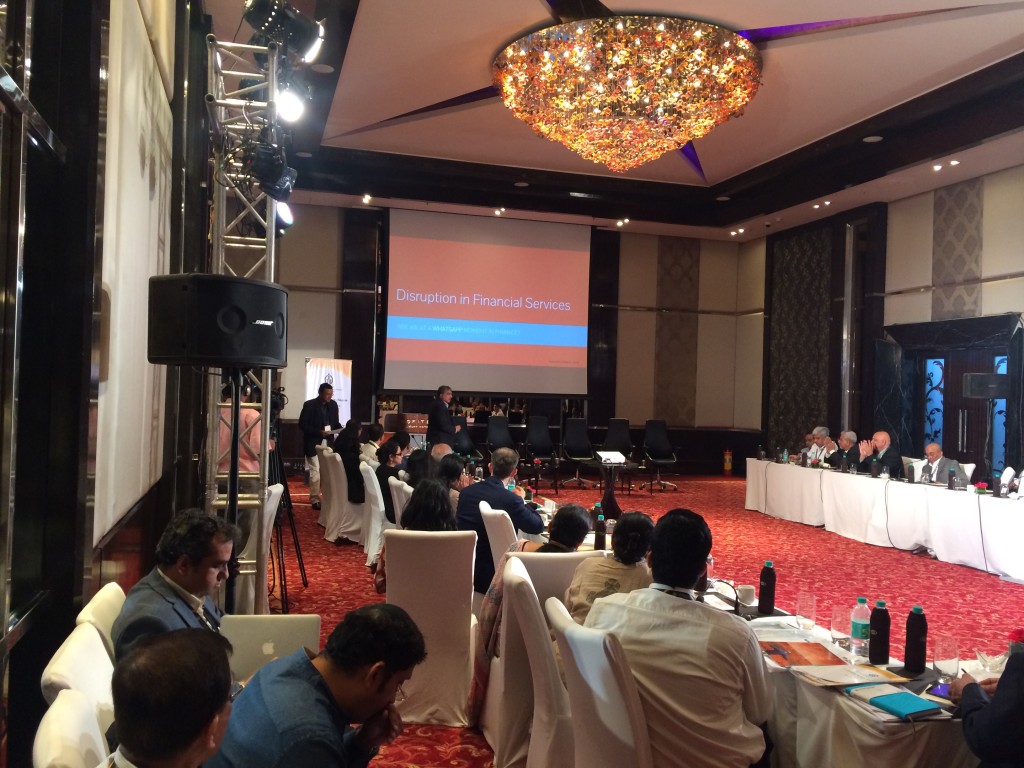 The keynote address was followed by sessions and demos by four select software product companies that have introduced innovative products and / or business models leveraging these influences and making the ‘new’ Fintech happen.
The keynote address was followed by sessions and demos by four select software product companies that have introduced innovative products and / or business models leveraging these influences and making the ‘new’ Fintech happen.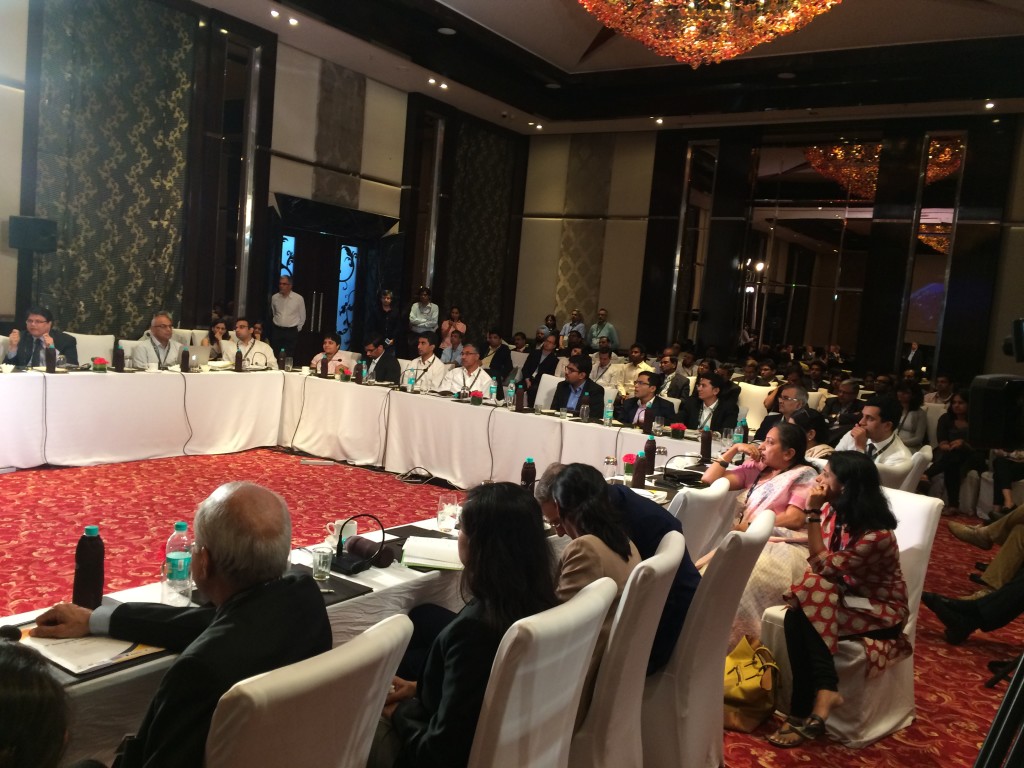 The panel where status quo meets disruption was highly animated discussion led by Prof Phatak and with two participants from the startup/VC community – Haresh Chawla from IVFA & Sanjay Swamy from Prime Ventures – Dr Ajay Shah and Anand Bajaj, Head of Innovation at YesBank. Dr Phatak opened by stating the time is ripe for disruption and to move to a cashless and cardless world of mobile only payments. Mr Chawla was of the view that innovations will come once the cost of moving money between accounts is near zero – and the next wave of innovations will be around applications of low cost payments. Dr Shah was of the view that the regulator still needs to encourage disruptions and remains a risk to the innovation ecosystem if they stop innovations. Mr Bajaj, fresh from the signing of the MOU between YesBank and iSpirt to setup a framework for a banking app store reiterated the bank’s desire to partner with the startups as they innovate. Mr Swamy called for the need to remove some of the obstacles in on-boarding customers for electronic payment acceptance, and asked for a framework for piloting new concepts. Overall the panel raised several real issues that were actively debated – questions from the audience also echoed the fact that most of the points raised were relevant and real issues. Over the coming months we hope the banking industry will address these issues head-on and SRT the stage for India to maximize the opportunity of the new disruptive technologies from Aadhaar to biometric authentication to IMPS and the Unified Payment Interface.
The panel where status quo meets disruption was highly animated discussion led by Prof Phatak and with two participants from the startup/VC community – Haresh Chawla from IVFA & Sanjay Swamy from Prime Ventures – Dr Ajay Shah and Anand Bajaj, Head of Innovation at YesBank. Dr Phatak opened by stating the time is ripe for disruption and to move to a cashless and cardless world of mobile only payments. Mr Chawla was of the view that innovations will come once the cost of moving money between accounts is near zero – and the next wave of innovations will be around applications of low cost payments. Dr Shah was of the view that the regulator still needs to encourage disruptions and remains a risk to the innovation ecosystem if they stop innovations. Mr Bajaj, fresh from the signing of the MOU between YesBank and iSpirt to setup a framework for a banking app store reiterated the bank’s desire to partner with the startups as they innovate. Mr Swamy called for the need to remove some of the obstacles in on-boarding customers for electronic payment acceptance, and asked for a framework for piloting new concepts. Overall the panel raised several real issues that were actively debated – questions from the audience also echoed the fact that most of the points raised were relevant and real issues. Over the coming months we hope the banking industry will address these issues head-on and SRT the stage for India to maximize the opportunity of the new disruptive technologies from Aadhaar to biometric authentication to IMPS and the Unified Payment Interface.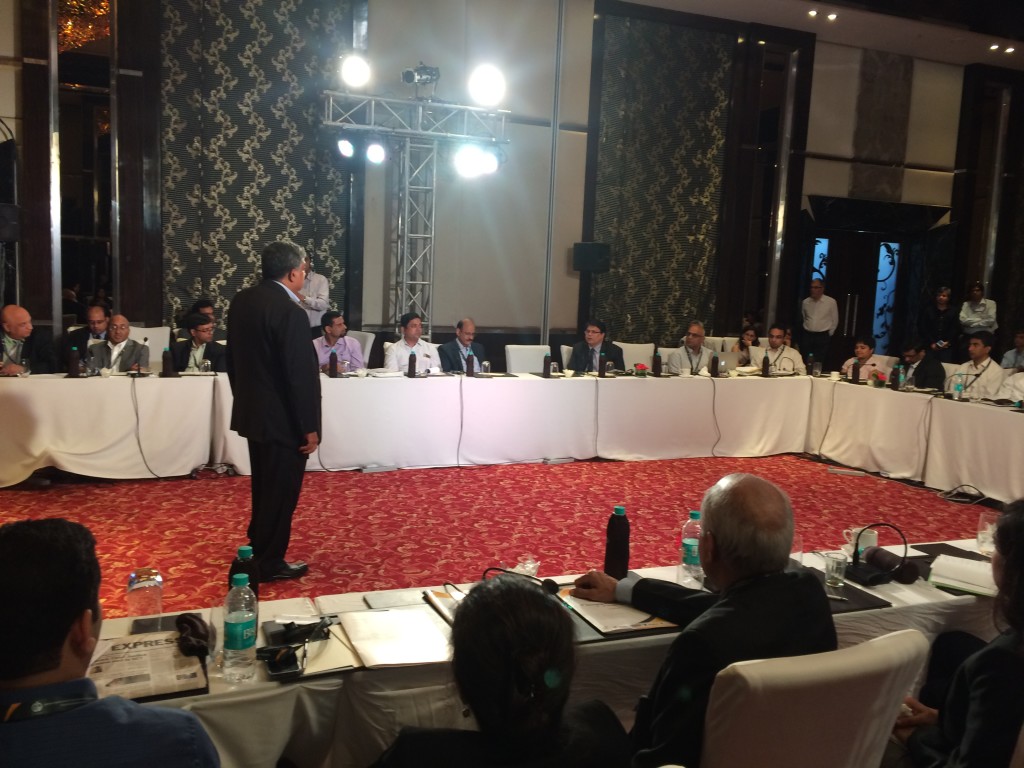 This is was the first Fintech event for iSPIRT in Mumbai and it received record registrations. IGIDR FRG event organizers expressed desire to conduct a dedicated event based on the positive feedback received.
This is was the first Fintech event for iSPIRT in Mumbai and it received record registrations. IGIDR FRG event organizers expressed desire to conduct a dedicated event based on the positive feedback received.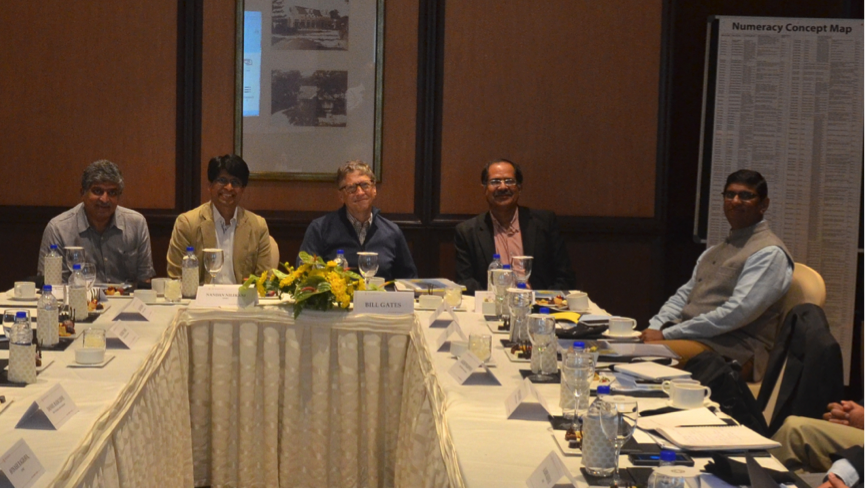 There were three broad themes that were covered — finance, healthcare and education — each of which forms an important part of the Gates Foundation’s work in philanthropy. Product demos included the
There were three broad themes that were covered — finance, healthcare and education — each of which forms an important part of the Gates Foundation’s work in philanthropy. Product demos included the 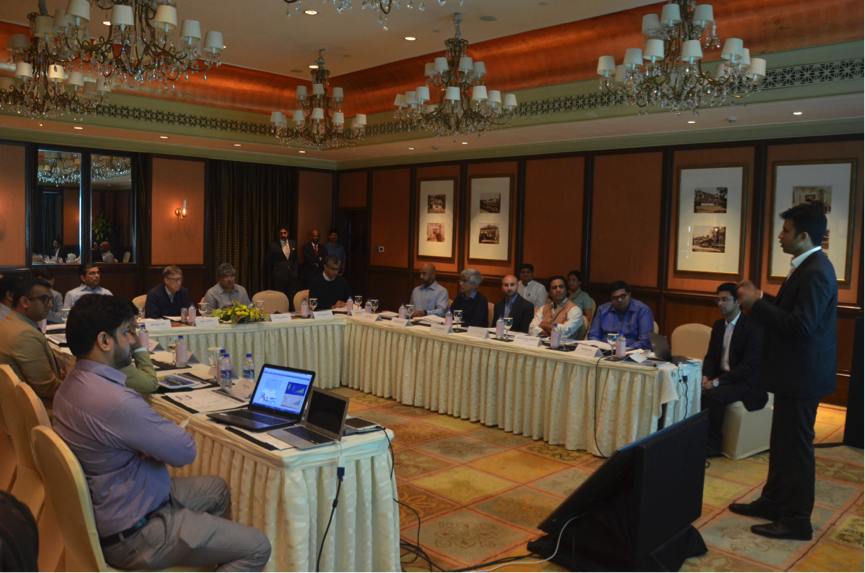 Bill Gates observed that India is producing cutting-edge work and there are few countries which can boast of a digital infrastructure as sophisticated as we are producing here. With such positive encouragement from one of the most accomplished individuals in the world, the vision of transforming India at large through application of technology has received a new impetus.
Bill Gates observed that India is producing cutting-edge work and there are few countries which can boast of a digital infrastructure as sophisticated as we are producing here. With such positive encouragement from one of the most accomplished individuals in the world, the vision of transforming India at large through application of technology has received a new impetus.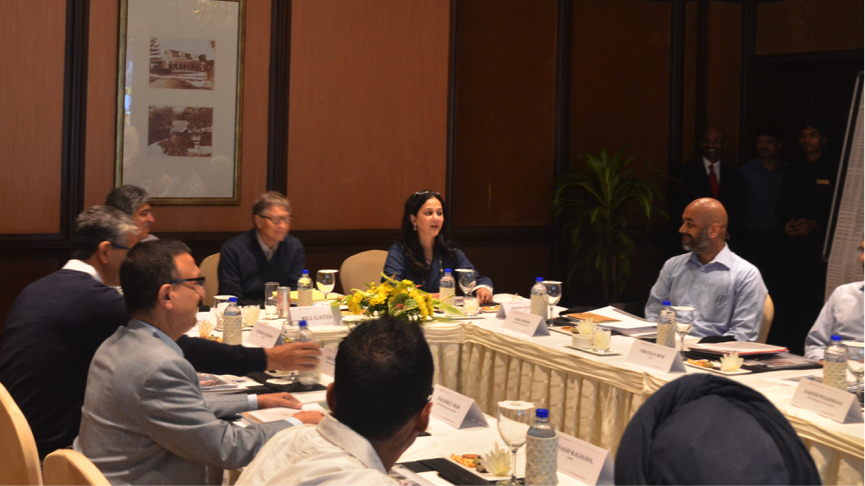 Guest Post by
Guest Post by  A. First Bhukkad started as there were very few good food options in and around college for food. During my college years, I ran Bhukkad like that. Post that, in 2013, when I graduated, I found that I had a high cholesterol problem and I couldn’t find places to eat. Whatever options were available, were very expensive and were available in a very formal niche environment. Hence the new bhukkad version was born to make food which is fast and also good for the consumers.
A. First Bhukkad started as there were very few good food options in and around college for food. During my college years, I ran Bhukkad like that. Post that, in 2013, when I graduated, I found that I had a high cholesterol problem and I couldn’t find places to eat. Whatever options were available, were very expensive and were available in a very formal niche environment. Hence the new bhukkad version was born to make food which is fast and also good for the consumers.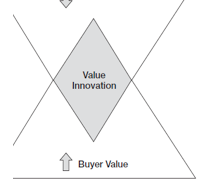 Low-end footholds exist; when an established or large organization focuses only on the prime customers or most profitable customers and overlook their needs and fail to fulfil the needs of the least profitable or low-end customers. New entrants seize the white space by servicing to these low-end segments with ‘good enough’ product. The performances of the new entrants are ever improving when compared to those established incumbents. However, the quality of their offerings increases over the period of time. New entrants create unprecedented value to the customers by adopting Value Innovation. Value Innovation is created in the region where a company’s actions favourably affect both its cost structure and its value proposition to buyers.
Low-end footholds exist; when an established or large organization focuses only on the prime customers or most profitable customers and overlook their needs and fail to fulfil the needs of the least profitable or low-end customers. New entrants seize the white space by servicing to these low-end segments with ‘good enough’ product. The performances of the new entrants are ever improving when compared to those established incumbents. However, the quality of their offerings increases over the period of time. New entrants create unprecedented value to the customers by adopting Value Innovation. Value Innovation is created in the region where a company’s actions favourably affect both its cost structure and its value proposition to buyers.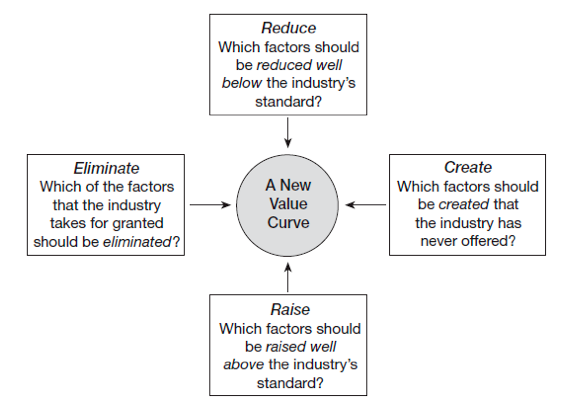
 Digital wallet and mobile commerce marketplace Paytm is creating huge market by enabling more than 80,000 merchants to do the transactions on its platform. Paytm is an Indian e-commerce shopping website launched in 2010, owned by One97 Communications which initially focused on Mobile and DTH Recharging. The company is headquartered in Noida, India. It gradually provided recharging and bill payment of various portals including electricity bills, gas bills, as well as telephone bills. Paytm entered India’s e-commerce market in 2014, providing facilities and products similar to businesses such as Flipkart, Amazon.com, Snapdeal. In 2015, it added booking bus travel. In July 2015, it included industrial supplies such as power tools, safety and security equipment, test & measurement apparatuses, machines, lab supplies, abrasives etc on its platform. Paytm states that the initiative will help SMEs get in touch with different suppliers for different needs. Currently, it claims to have crossed over 100 million users in the country in a very short span. It also declares that more than 75 million transactions are made through their platform. In 2014, the company launched Paytm Wallet, India’s largest mobile payment service platform with over 40 million wallets. The service became the preferred mode of payment across leading consumer internet companies such as Uber, BookMyShow, MakeMyTrip and many more.
Digital wallet and mobile commerce marketplace Paytm is creating huge market by enabling more than 80,000 merchants to do the transactions on its platform. Paytm is an Indian e-commerce shopping website launched in 2010, owned by One97 Communications which initially focused on Mobile and DTH Recharging. The company is headquartered in Noida, India. It gradually provided recharging and bill payment of various portals including electricity bills, gas bills, as well as telephone bills. Paytm entered India’s e-commerce market in 2014, providing facilities and products similar to businesses such as Flipkart, Amazon.com, Snapdeal. In 2015, it added booking bus travel. In July 2015, it included industrial supplies such as power tools, safety and security equipment, test & measurement apparatuses, machines, lab supplies, abrasives etc on its platform. Paytm states that the initiative will help SMEs get in touch with different suppliers for different needs. Currently, it claims to have crossed over 100 million users in the country in a very short span. It also declares that more than 75 million transactions are made through their platform. In 2014, the company launched Paytm Wallet, India’s largest mobile payment service platform with over 40 million wallets. The service became the preferred mode of payment across leading consumer internet companies such as Uber, BookMyShow, MakeMyTrip and many more. It was in 2011 that
It was in 2011 that 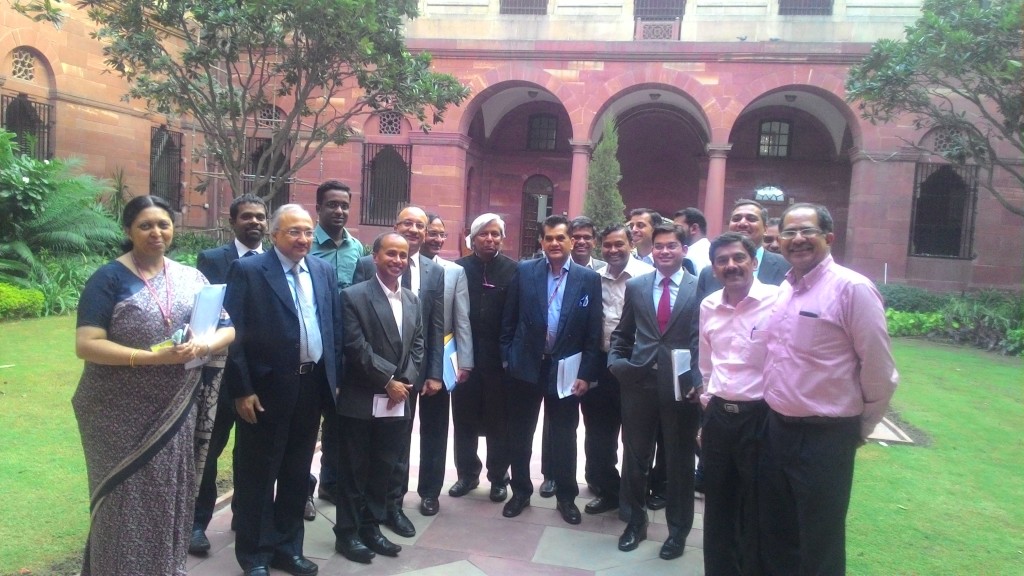
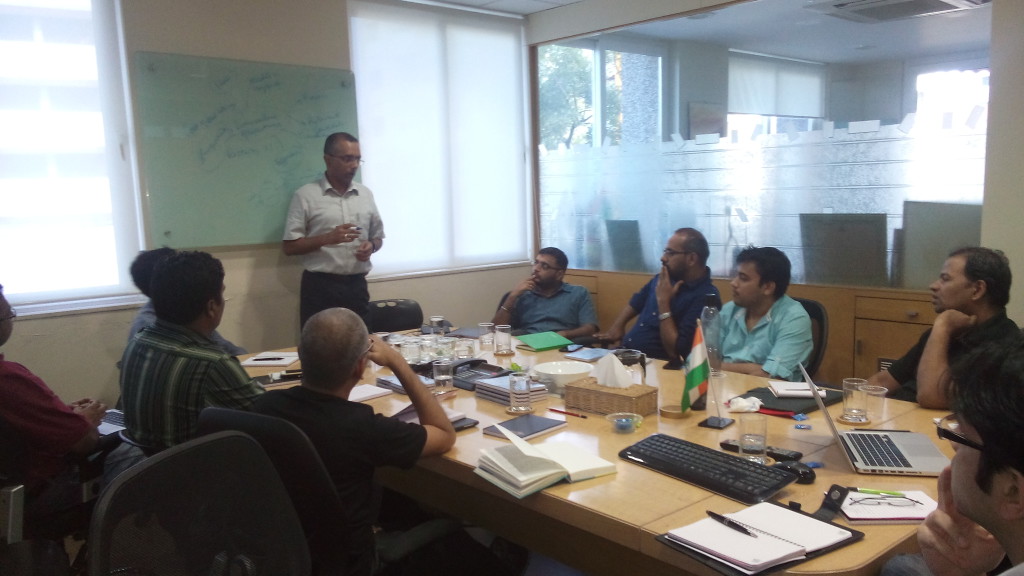 Curse of Knowledge
Curse of Knowledge